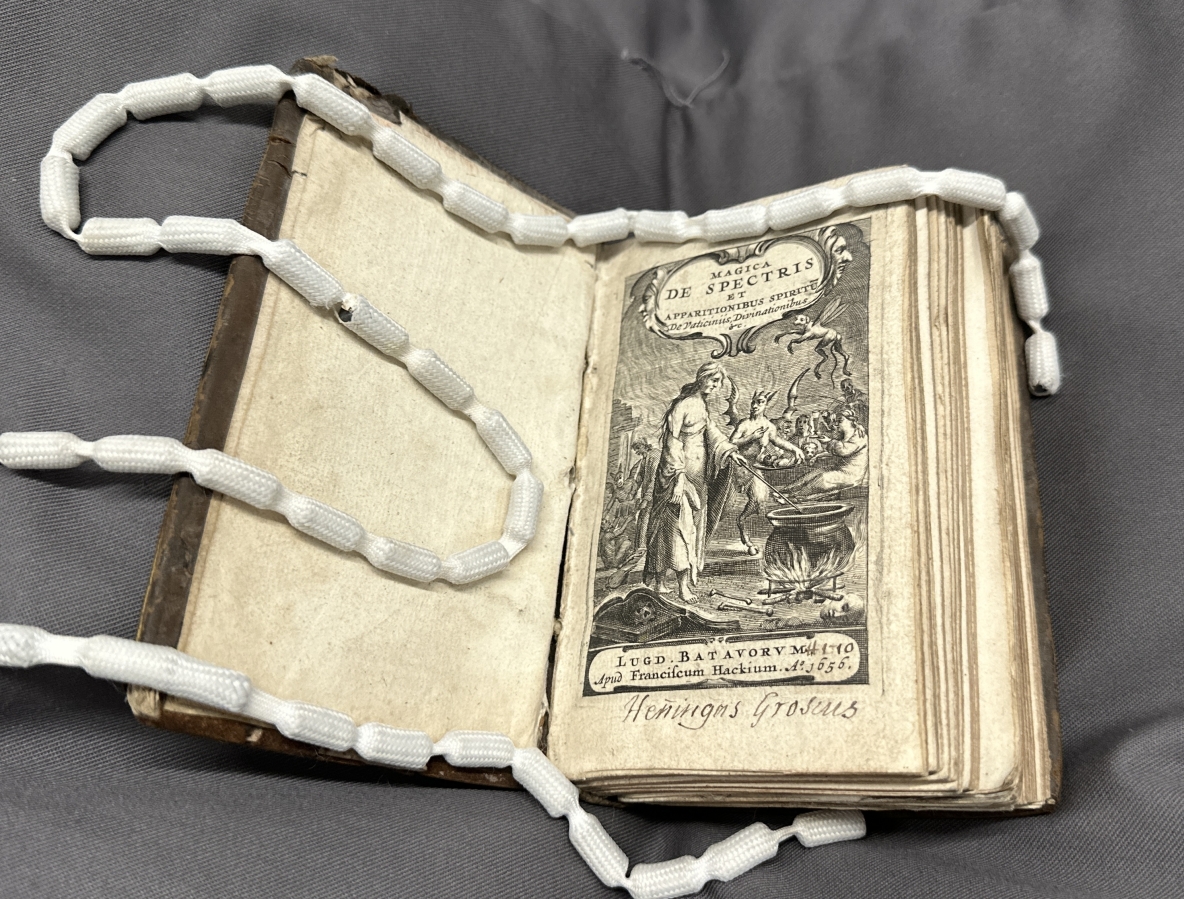

University of Limerick Special Collections: A Window into History’s ‘Witch Craze’
The Special Collections and Archives Department at the Glucksman Library, University of Limerick is home to an impressive selection of archives, rare books, and manuscripts. Among these unique collections is the Bolton Library, containing some 12,000 texts.
The Bolton Library is a treasure trove of material that offers a fascinating insight into key historical events across a span of almost 2,000 years – among them, the infamous witch trials that swept parts of Europe and the United States, resulting in the death of thousands of people – mainly women – charged with partaking in witchcraft.
“In the sixteenth and seventeenth centuries, you have a phenomenon known as the ‘witch craze’, where you had a very significant increase in the persecution and prosecution of people accused of witchcraft,” explains Dr Richard Kirwan, Senior Lecturer in History at the Faculty of Arts, Humanities and Social Sciences, University of Limerick.
Richard, an Irish Research Council Laureate, explains that while belief in witches long predates the sixteenth century, the combination of elite and popular beliefs around witchcraft at this time created the “perfect storm” that manifested in the prosecution and execution of witches. Indeed, while society in general still held concerns around witchcraft, tension was heightened by a renewed interest in the perceived problem of witches among the learned in society along with legal reforms leading to the redesignation of witchcraft as a crime punishable by death.
The Bolton Library materials highlight the important role that published books and manuscripts played in spreading popular ideas and concerns regarding witchcraft at this time.
“The elites and, in particular, the learned elites – the educated – believed that this was a real threat to the integrity of society. During this period, the subject of demonology became of particular interest to scholars, and there was an outpouring of scholarly work on demonology – examples of which are included in the Bolton Library,” says Richard.
Among these books is Daemonologie, written by King James I of England and printed in 1603, over 100 years after Pope Innocent VIII issued a papal bull confirming the existence of witches and calling for authorities to deal with them appropriately. Across the book’s 80 pages, the king shares a study of demonology and endorses the practice of witch-hunting.
For King James, the topic of witchcraft was close to home. Years earlier, the king had travelled by sea to Copenhagen to meet his future wife, Anne of Denmark. The voyage was beset by terrible storms, and while the king did eventually make it to land safely, the experience would have a profound impact on him and his reign.
“It was completely normal at that time to conflate what was going on in the world around you with something otherworldly. The king and his crew put it down to witchcraft,” explains Olivia Lardner, Cataloguer of the Bolton Library.
“Then, the king arrives in the royal court of Copenhagen, and all anyone is talking about is the occult and witchcraft – this is very real for this young king.”
Back at home in England with his new wife, King James got to work on writing his philosophical dissertation, Daemonologie. The book, which gave licence to people in this part of the world to hunt witches, would become an extremely influential text throughout the witch hunts and trials of the period.
Another Bolton Library text which proved just as popular on the Continent is the Disquisitiorium magicarum libri sex, written by a Dutch Jesuit theologian named Martin Delrio. In this six-volume tome, printed in Germany in 1601, Delrio informs readers of how to recognise a witch, and what to do if you meet one.
“This basically became a witch-hunter’s manual, and it was extremely popular,” says Olivia, adding that the text’s popularity continued well into the eighteenth century.
The Bolton Library also charts the place of witchcraft in society right into the Age of Enlightenment, most notably through John Beaumont’s An historical, physiological and theological treatise of spirits, apparitions, witchcrafts, and other magical practices. Printed in 1705, the book offers an insight into the grasp that witchcraft and demonology continued to hold on society, even at a time when popular thinkers were choosing to lead with reason.
“John Beaumont is a physician and geologist – a man of the sciences. And here he is, in 1705, offering a book on spirits,” says Olivia.
“Here we have, in the age of Age of Reason, the sciences happily cohabiting with the spirit world.”
The unique historical resources contained within the Special Collections and Archives Department offer endless opportunities for original research and discovery. For more information on the texts and resources housed within the department, or to arrange an appointment to view materials in the dedicated reading room, click here.
Email: ahss@ul.ie
Phone: +353-61-202700
Postal Address: AHSS Faculty Office, University of Limerick, Limerick, Ireland.